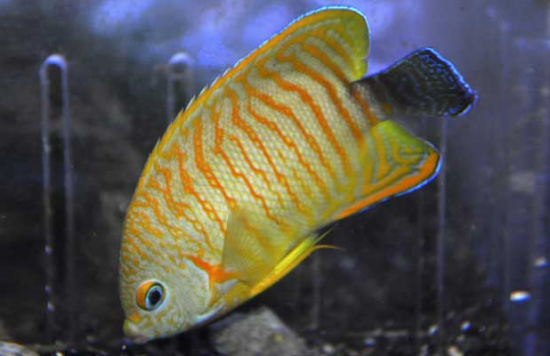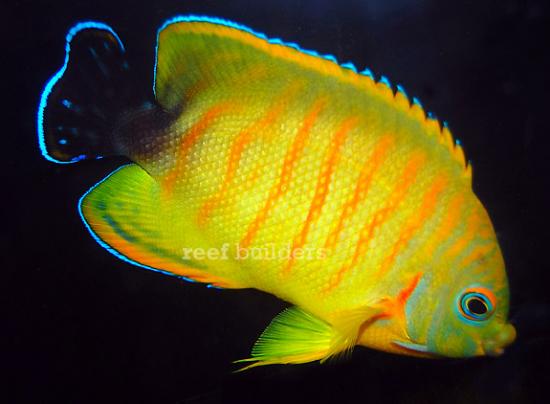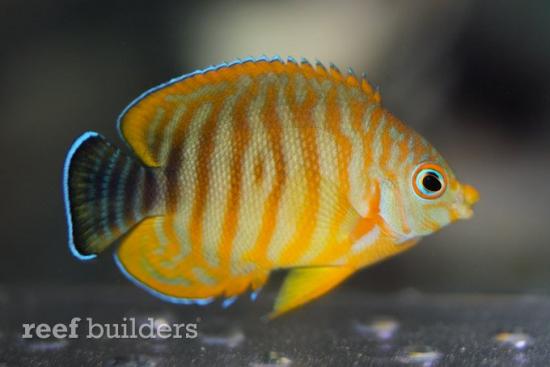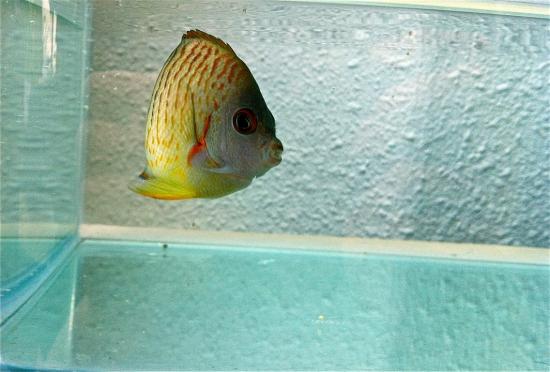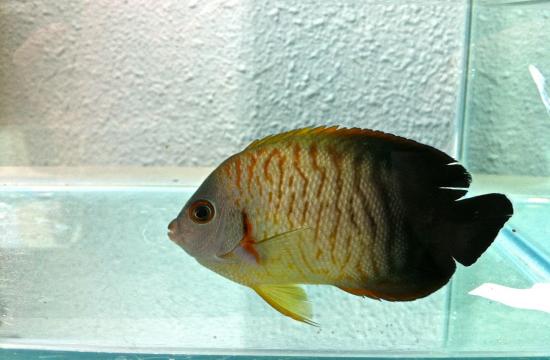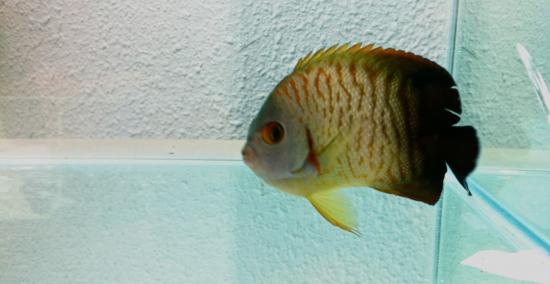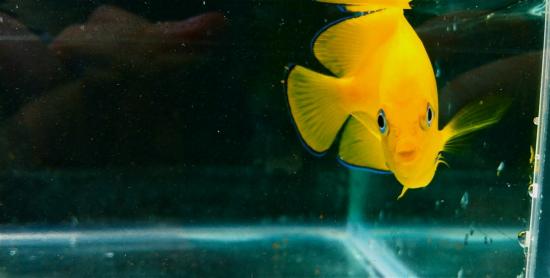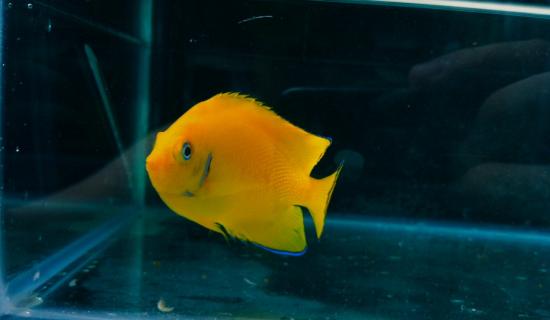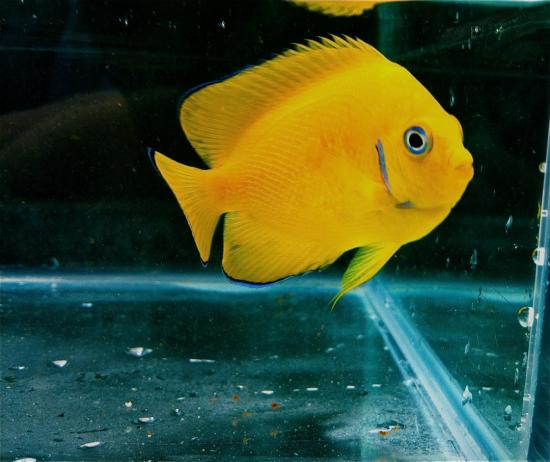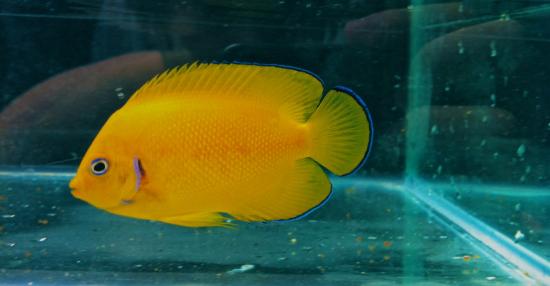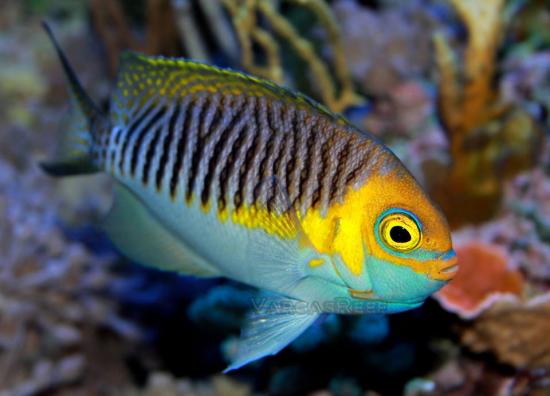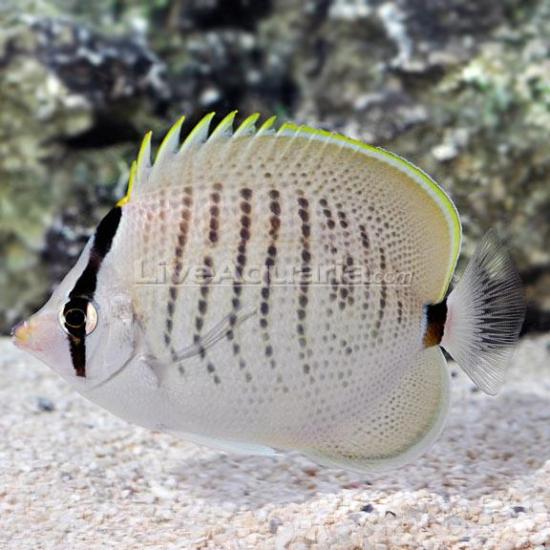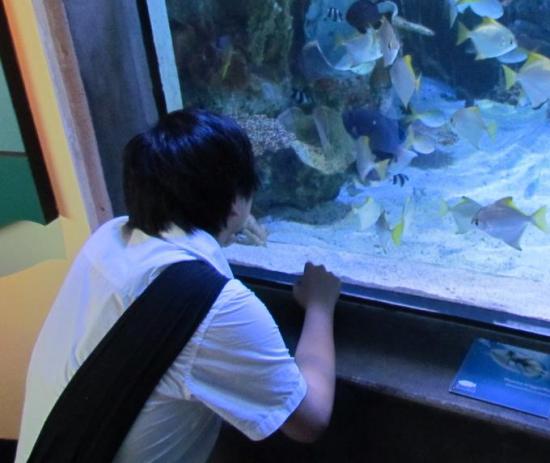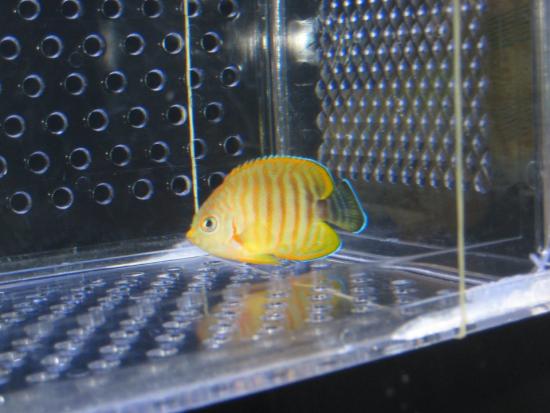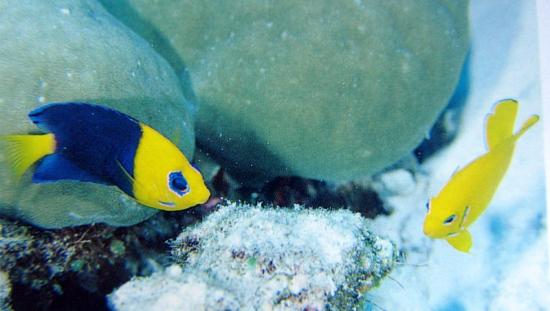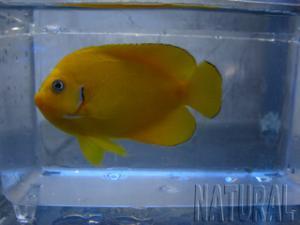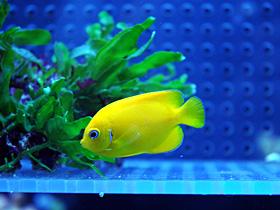-
Posts
16,553 -
Joined
-
Last visited
-
Days Won
29
Content Type
Profiles
Forums
Gallery
Everything posted by yikai
-
In the wild, the indian ocean lemonpeel with the funky eye hybridizes with the eibli angelfish in christmas islands to produce the legendary tiger-pyge dwarf angel. it can also hybridize with eibli x vroliki hybrids to produce tiger-pyge hybrids too (since they are not sterile), but they will look difference, since this hybrid will then contain genetic input from three fishes. the lemonpeel, the eibli, and the vroliki. this is the tigerpyge. a nickname given to any specimen which is a lemonpeel x eibli or a lemonpeel x (eibli x vroliki). so far all these tigerpyge hybrids have been formed with the indian ocean lemonpeel. this is proven by the appearance of the hybrids having a blue iris. only the lemonpeel from the indian ocean has a blue iris and so it's the only fish to pass this trait on. so far no "tigerpyges" involving the pacific ocean regular lemonpeels with the blue eye ring have been documented as far as i know. those regular lemonpeels with the blue eye ring produce other hybrids with vroliki halfblack angels in marshall islands and vanuatu, etc. below some photos of tigerpyge. i can only pair the parents up and even if they spawn, no one in singapore as far as i know is capable of breeding centropyge yet. i don't think fuel can raise centropyge. but who knows.
-
I intend to pair the cocos lemonpeel with my hybrid Eibli x vroliki. I've already caught it out and placed it in the sump where the cocos lemonpeel is. the two fishes, when spawned and fries raised, will produce the legendary tiger-pyge dwarf angel. here's a few pics of my eibli x vroliki. since eibli, vroliki and lemonpeel are all very closely related and in the same complex, mixing and pairing any of the three is quite easy and possible.
-
Have not updated this thread in awhile. Here's a couple photos of a new dwarf angel added to my collection. It's the Indian Ocean variant of the Lemonpeel Angelfish, Centropyge flavissimus. What's so special/different from the regular lemonpeel? Check out the eyes. Not only does it lack the blue eye ring, the entire iris of the eye is blue. Pacific Ocean lemonpeels from marshall islands, hawaii etc have brown irises and a blue ring around the eye. Indian Ocean lemonpeels from christmas island and cocos island have blue irises and no blue eye ring. This gives the appearance of a rather clueless- squinty eyed lemonpeel. I find it extremely cute and charming! Only Indian ocean lemonpeels have this characteristic and it's a geographical variation, but some scientists believe that this divergence has caused the normal lemonpeel to slightly evolve and classify it as a different species. enough words, here are some pics. all pics taken using iphone4. Take quite good photos right! unfortunately this is seldom seen in the trade and can only be gotten so far from coral farm here in singapore. these fish arrive from the same shipment as joculator angelfishes, from the cocos islands. but each shipment only yields a small small number and not every shipment will carry this.
-

OMG! Look at these hybrids and rare fishes!
yikai replied to Digiman's topic in FOWLR (Fish-only with Live-rock)
I intend to pair the cocos lemonpeel with my hybrid Eibli x vroliki. I've already caught it out and placed it in the sump where the cocos lemonpeel is. the two fishes, when spawned and fries raised, will produce the legendary tiger-pyge dwarf angel. here's a few pics of my eibli x vroliki. since eibli, vroliki and lemonpeel are all very closely related and in the same complex, mixing and pairing any of the three is very easy and possible. -

OMG! Look at these hybrids and rare fishes!
yikai replied to Digiman's topic in FOWLR (Fish-only with Live-rock)
digi, jake took some nice photos of the canary damsels that were living in the azoo tank in long beach. gorgeous right! -

OMG! Look at these hybrids and rare fishes!
yikai replied to Digiman's topic in FOWLR (Fish-only with Live-rock)
Here's a couple photos of a new dwarf angel added to my collection. It's the Indian Ocean variant of the Lemonpeel Angelfish, Centropyge flavissimus. What's so special/different from the regular lemonpeel? Check out the eyes. Not only does it lack the blue eye ring, the entire iris of the eye is blue. Pacific Ocean lemonpeels from marshall islands, hawaii etc have brown irises and a blue ring around the eye. Indian Ocean lemonpeels from christmas island and cocos island have blue irises and no blue eye ring. This gives the appearance of a rather clueless- squinty eyed lemonpeel. I find it extremely cute and charming! Only Indian ocean lemonpeels have this characteristic and it's a geographical variation, but some scientists believe that this divergence has caused the normal lemonpeel to slightly evolve and classify it as a different species. enough words, here are some pics. all pics taken using iphone4. Take quite good photos right! unfortunately this is seldom seen in the trade and can only be gotten so far from coral farm here in singapore. these fish arrive from the same shipment as joculator angelfishes, from the cocos islands. but each shipment only yields a small small number and not every shipment will carry this. -
Cf have a few yellow belly regals from Medan. Amazing thing is most are feeding greedily on pellets. And very active. Something I've never seen before in shop held Medan regals. People who want to try this out please hurry. There was one specimen with very nice scribbled markings on the head. An aberration. Was too slow in getting it but to the bro who I met in cf who got it, if you're reading this, it's a very nice piece and it was the greediest one. Take care of it. It's gorgeous!
-

OMG! Look at these hybrids and rare fishes!
yikai replied to Digiman's topic in FOWLR (Fish-only with Live-rock)
cfm charlene's anthias -

OMG! Look at these hybrids and rare fishes!
yikai replied to Digiman's topic in FOWLR (Fish-only with Live-rock)
yup. all the fishes i've listed so far are all peaceful, relatively small reef fishes spanning butterflies, angels, wrasses, gobies, damsels etc. there is no reason why with proper introduction and a large reef tank, with ample hiding spaces, these fish cannot be kept together. have you seen david saxby's tank? the owner of D&D? his tank is HUUGEEE and he has countless anthias and many many many many tangs of the same species living together. along with tons of triggerfishes, damsels, wrasses and so many other fishes. in fact, if given a super huge reef tank and assuming the fish i wanted are all introduced, we might even see things that we cannot see in a small tank. for example, introducing all the same species of dwarf angels and watching them set up their harem and social order in a huge tank will be very exciting to see. introducing more than one species of fish may also result in spawning, and hybrid formation. of course, rearing the eggs is another can of worms that cannot be done by any average hobbyst. but then again we have to be realistic. we're talking about huge aquariums here, almost public sized. and to be honest, some of the fish i want are not obtainable and i just say "I WANT!" for fun haha! -

OMG! Look at these hybrids and rare fishes!
yikai replied to Digiman's topic in FOWLR (Fish-only with Live-rock)
Tony Vargas's new semifasciatus male. oh my god this photo slayed me and sent me to heaven. NO EXPLANATION NEEDED!!! omg gorgeousssssss -

OMG! Look at these hybrids and rare fishes!
yikai replied to Digiman's topic in FOWLR (Fish-only with Live-rock)
-

OMG! Look at these hybrids and rare fishes!
yikai replied to Digiman's topic in FOWLR (Fish-only with Live-rock)
oh i like this! undescribed and new? how old is the photo. do you have anymore information? -

OMG! Look at these hybrids and rare fishes!
yikai replied to Digiman's topic in FOWLR (Fish-only with Live-rock)
ta da da da! correct! -

OMG! Look at these hybrids and rare fishes!
yikai replied to Digiman's topic in FOWLR (Fish-only with Live-rock)
-

OMG! Look at these hybrids and rare fishes!
yikai replied to Digiman's topic in FOWLR (Fish-only with Live-rock)
not really. in order for evolution to happen, these things have to happen very consistantly and slowly over the years. the scarcity of these hybrids in the wild may not allow that to happen. however, it is possible. these hybrids could be segregated and start their own population elsewhere and then grow and mingle with each other to form a true species that was once based on a hybrid that got lost. this is speculated to happen in centropyge shepardi. so i think the answer to your question is yes and no. but i doubt the collection of such few pieces have that much of an impact. i don't know though. just a guess. -

OMG! Look at these hybrids and rare fishes!
yikai replied to Digiman's topic in FOWLR (Fish-only with Live-rock)
-
don't be too excited because the difference is not much from the normal lemonpeel. here are some photos of it in captivity and in the wild. look at the eye. it is missing the blue ring but instead, the iris of the eye is blue. i like this alot and find it very interesting. but not many people would pay many times more for a lemonpeel that looks hardly different from the norm.
-
Yes. It's an exciting little dwarf angel that seldom gets put on sale. It's same species, a lemonpeel, from it's commoner pacific counterparts but the difference is in the eye. Probably a geographical variation or a new species evolved from the regular lemonpeel through speciation. This one is found in cocos island with Joculators and is an Indian ocean species. Not pacific. Do you hve any idea on the price?
-

OMG! Look at these hybrids and rare fishes!
yikai replied to Digiman's topic in FOWLR (Fish-only with Live-rock)
I don't think so These hybrids are extremely rare in the trade and even in the wild. It's unlikely that human collection has any effect on these populations. We're not talking about thousands of them being caught like flame angels. I think this angel have a cumulative collection of less than 10! Or maybe slightly more -

OMG! Look at these hybrids and rare fishes!
yikai replied to Digiman's topic in FOWLR (Fish-only with Live-rock)
Thts how some tigerpyges are found. That's what makes it so rare. Indian ocean have eibli x lemonpeel and it's not as rare. This one is rarer because it's found in Bali and that means that the lemonpeel made its way there from Indian ocean. Very amazing -

OMG! Look at these hybrids and rare fishes!
yikai replied to Digiman's topic in FOWLR (Fish-only with Live-rock)
No. It's from Bali. The cocos lemonpeel is a waif that get stranded in Bali as it floats along the sea when it's a larvae. That's why the hybrid is so rare -

OMG! Look at these hybrids and rare fishes!
yikai replied to Digiman's topic in FOWLR (Fish-only with Live-rock)
it's a hybrid between a cocos lemonpeel and a eibli x vroliki hybrid according to copps. "Lemon, the dark shading from the caudal fin goes pretty far anteriorly... which I've only ever seen on fish with input from vrolikii... like the flavissima/ vrolikii hybrids from the central Pacific... with where this fish is from I wouldn't be surprised if the parents of this fish are a Christmas Island (Indian Ocean) lemonpeel and a vrolikii/ eibli hybrid... which is entirely possible..." - copps -

OMG! Look at these hybrids and rare fishes!
yikai replied to Digiman's topic in FOWLR (Fish-only with Live-rock)
it's found in bali. what i'm thinking is it's a hybrid between an eibli and the indian ocean cocos island lemonpeel that rarely waifs there. but there's somthing else special about it. it resembles the undescribed angelfish centropyge cf. eibli from australia, rowley shoals. john coppolino say it has vrolikii blood in it though, so it's a tri-hybrid.


